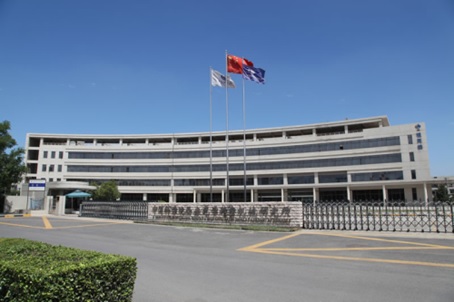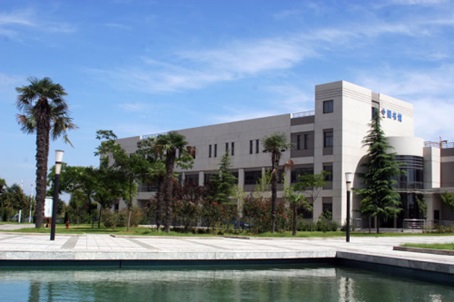Xi'an Institute of Optics and Precision Mechanics (XIOPM), Chinese Academy of Sciences was founded in 1962 and is one of the largest research institutes of Chinese Academy of Sciences (CAS) in the Northwest. After more than 50 years of innovation, it has developed into a comprehensive research base research institute focusing on strategic high-tech innovation and applied basic research.

Research and People
The main research fields and directions of XIOPM are as follows: transient optics and photonics, high-resolution visible light spatial information acquisition and optical remote sensing technology, interference spectrum imaging, high-speed optoelectronic information acquisition and processing technology, advanced optical instruments and underwater optical technology.
The institute has 32 research units with complete technical service system, including one national key laboratory, three key laboratories of CAS, two Shaanxi Engineering and Technology Centers, one Shaanxi Provincial Key Laboratory and Xi’an Key Laboratory.
There are 914 staff including 364 senior researchers, 1 academician of CAS, 14 State Council Experts for Special Allowance, and 1 winner of China National Funds for Distinguished Young Scientists. Famous scientists such as Gong Zutong, Hou Xun, Xue Mingqiu, Niu Hanben, Xiangli Bin were elected as academicians of CAS for them excellent work in Xi'an Institute of Optics and Mechanics. In 2016, it was awarded National Innovation Talent Training Demonstration Base by Ministry of S&T.

Achievements
Since the 11th Five-Year Plan, research on reform, innovation, service development, and building an innovative country has taken on responsibility, and has undertaken and successfully completed many major national tasks such as the lunar exploration project.
The institute won 4 national special prizes for scientific and technological progress, 1 first prize, 4 second prizes, and 36 provincial and ministerial awards. In 2010, two achievements were selected as “Top Ten Events in China's Space Remote Sensing”. In 2011, the Institute won the Outstanding Achievement Award of CAS. In 2012, one of the results was selected as “China's Top Ten Scientific and Technological Progress”.
In 2010, Zhao Wei received the highest award in the field of high-speed imaging and photonics “High-Speed Imaging Gold Award”. This is the second time that Chinese scientists have received this, which was awarded to Gong Zutong 29 years ago. The awards fully demonstrate the international influence of XIOPM in the field of high-speed imaging and photonics.
Postgraduate Education
XIOPM is the first batch of master's and doctoral degree granting units approved by the Academic Degrees Committee of the State Council. It is the first batch of post-doctoral research stations in China and is also an important research base of CAS in the field of photoelectron.
At present, there are two post-doctoral research stations in physics and optical engineering; there are four first-level disciplines (including 7 second-level disciplines) in physics, optical engineering, electronic S&T, and information and communication engineering. There are two master's degree programs in science and engineering, control science and engineering, as well as four master's degree programs in optical engineering, electronics and communication engineering, control engineering and materials engineering. In the field of optoelectronic S&T, we have trained a group of young talents in S&T.
In the 2006 National First-Level Discipline Evaluation of the Academic Degrees Committee of the State Council, the comprehensive score of the first-level discipline of optical engineering of XIOPM ranked sixth in the country; in the Disciplinary Evaluation of CAS (2016), three first-level disciplines were ranked in top three.
There are 190 postgraduate supervisors, including 43 doctoral supervisors. There are 524 postgraduate students, of which 53% are doctoral students and 47% are master students.
In the past five years, the institute has won 4 outstanding doctoral thesis of CAS; 4 special prizes of Presidents of CAS and 18 outstanding awards; A total of nearly 60 postgraduate students have been publicly funded to participate in international exchanges, and have successively went to MIT, California Institute of Technology, Berkeley National Laboratory, Paris High School, University of Wisconsin-Madison, University of British Columbia, University of Connecticut, Nanyang Polytechnic and other international top universities for joint training.
In July 2019, Dr Pan An was qualified for the 69th Nobel Prize Winners Conference and won the Best Poster Award.

International collaboration
Xi'an Institute of Optics and Precision Mechanics has close relationships with the international academic community. Nobel Prize winners such as Yang Chenning, Lee Tsung-Dao and Samuel Chao Chung Ting have visited the institute and gave lectures. The institute cooperated with Italy to establish the "Super High Speed Photonic Network and Communication Joint Laboratory" and established the China-UK Joint Research Center on Micro/Nano Photonics with University of South Wales. In China, joint laboratories were established with Xi'an Jiaotong University and Northwestern Polytechnical University.
Scientific Achievements Incubation
In recent years, Xi'an Institute of Optics and Precision Mechanics adheres to facing the forefront of the world's S&T, facing the country's major needs, facing the main field of the national economy, driving development with innovation, and boldly innovating the system of S&T. It adheres to demolish “enclosure”, run opening-up institute for taking the lead in proposing and shaping the "hard technology" double-creative brand.
It established a national one-stop hard technology venture investment incubator platform specialized in high-tech industry incubation and venture capital investment - Zhongke Chuangxing. It initiated the establishment of the first angel fund focused on the industrialization of hard scientific and technological achievements - "Xike Angel" fund, creating the first optoelectronic industry incubator focused on "hard technology" in China, initiating the establishment of a startup camp. It built a technology entrepreneurial ecological network system with “the research institute + Angel Fund + Incubator Entrepreneurship + startup training”.
By the end of June 2019, XIOPM has led to the incubation of 295 "hard technology" enterprises, forming three major industrial groups of photonics manufacturing, photonic information and biophotonics. Seven companies are listed on the new over-the-counter market, with a market capitalization of more than 50 billion Yuan RMB. It has accumulated more than 5 billion Yuan RMB of social investment, driving more than 8,000 jobs, and the value-added of state-owned assets has increased nearly 100 times.
Leadership Visits
On February 15, 2015, Xi Jinping, General Secretary of CPC Central Committee, paid a visit to XIOPM, as the first top leader to the Institute in more than 50 years after its establishment, leaving great honor to the Institute. General Secretary Xi said “XIOPM has made helpful exploration and trial in S&T achievement transformation”, and pointed out that core technologies will never come from charity but must be self-reliant. He encouraged the institute to conscientiously implement the innovation-driven development strategy and to make new contributions to the “Two Century Goals”.
Since 2010, many state and CPC leaders have visited and cared XIOPM, including Jia Qinglin, Li Keqiang, Zhao Leji, et al. Leaders fully affirmed the development of the scientific and technological undertakings of the institute and the transformation of results.
Servicing Local Development
Xi'an Institute of Optics and Precision Mechanics is daring to explore and exploit the mutual promotion between S&T, and has formed a series of experiences that can be promoted and replicated. The innovation model was named “XIOPM Model” by Shaanxi Province and was written into the provincial government work report for five consecutive years.
In July 2016, the Shaanxi Provincial Government formulated and issued a copying and promotion work plan for the innovation model of Northwest Institute for Nonferrous Metals Research (NIN) and XIOPM, pointing out that the province's XIOPM Model and NIN Model were promoted and replicated in the province. It is a key task set by the provincial party committee and the provincial government. It will set up 30 pilot units practicing this model in the province.
In 2017, the institute was listed as the second batch of “National Double Innovation Demonstration Base”. Based on the concept of “hard technology” proposed by the institute, Xi’an has successfully held two “Global Hard Technology Conferences”, and “hard technology” has become the new name card of Xi'an, for building Xi’an into a capital of S&T.

Prospect
As a new force and backbone force for national scientific and technological innovation, XIOPM will further emancipate the mind, unite strength, deepen reforms according to the requirements of General Secretary Xi and the party group, and strengthen innovation responsibility and innovate confidence in accordance with the new guidelines of CAS. In order to achieve the four first-mentioned requirements and goals, we will make more and more tangible contributions to building an innovative country and realizing the “Two Century Goals” and the Chinese dream of the great rejuvenation of the Chinese nation.
Copyright © Xi'an Institute of Optics and Precision Mechanics, CAS
Add: NO.17 Xinxi Road,New Industrial Park,Xi'an Hi-Tech Industrial Development Zone,Xi'an,710119,Shaanxi,P.R.China
TEL: 029-88887565 E-mail: info@opt.ac.cn Technical support:Qingyun Software
陕ICP备05007611号-1 ![]() 陕公网安备 61019002000970号
陕公网安备 61019002000970号